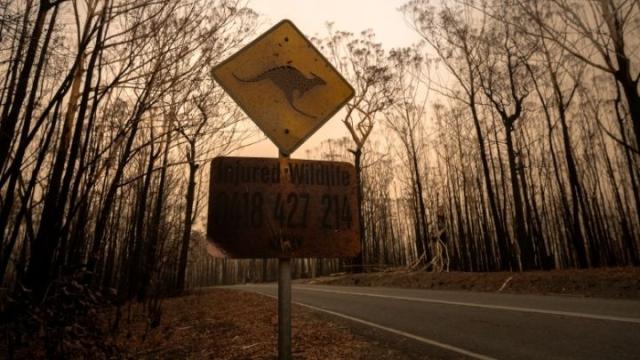A researcher from South Australia believes that the use of artificial intelligence and satellites could help us avoid a repeat of the Black Summer bushfires that devastated the nation almost two years ago.
Over the 2019 and 2020 summer, bushfires burned over 59 million acres, killed 34 people, billions of animals and damaged thousands of homes and buildings. It’s one of the most serious tragedies in recent Australian memory. Sydneysiders remember the event by the deathly black smoke that enveloped the city for weeks.
We knew bushfires were going to happen at that time of the year, it’s something we’ve all come to assume, but the Black Summer fires were massive. In the time since, there’s been a lot of thought on how perhaps, for future fires, we could be better prepared through technology. One researcher thinks there’s hope in turning to artificial intelligence.
University of South Australia STEM PhD candidate Liang Zhao believes it’s worth exploring how AI and satellites can help us in fighting bushfires, especially in the moments before they become catastrophic.
Right now, one of the more technical things we use when fighting bushfires is satellite imagery. Satellites are great technology for taking high-quality photos from high above, but they have limitations. Satellites were used during the Black Summer bushfires, but not in the way Liang is suggesting they be used.
“The problem with satellites is that those with high spatial resolution, focusing on small areas, tend to have low temporal resolution, taking much longer to capture images for the same location,” says Liang.
Liang’s solution involves training an AI to improve fire detection from up to 30,000 kilometres away. His AI algorithm has already been tested successfully with the Landsat 8 satellite, involving detecting the smoke of small fires after it rises to the canopy.
“In order to detect smoke emitted from small fires, it’s essential that the satellites can capture details in small areas.”
Liang was able to demonstrate exactly what he meant between two images – one from the MODIS satellite, and the other from Landsat 8.

“MODIS has a higher temporal resolution however it was already too late to control such a big fire,” Liang said in his three-minute thesis. “Landsat 8 revealed the smoke in small scales but such a chance is rare since it only passes the fire area every 16 days.”
In the context of the Black Summer bushfires, when fires were spreading extraordinarily fast, satellites would need to be much more responsive and more detailed, in order to provide the best data for his AI.
To detect the path of fires and where they’ll spread, Liang says it’ll be necessary to use multiple satellites. Smoke imagery will be sourced from these satellites and artificial intelligence models will analyse the images.
These models should be able to accurately identify smoke against other airborne particles like clouds and haze, to effectively work out where the smoke from smaller fires is coming from.
“Hopefully, with the help of my models, more extreme fires could be prevented and less shocking numbers would be seen in the future,” Liang added.
Truly for combatting future bushfires in Australia we need to think of some modern solutions – being able to train an AI to detect where the fires are heading would be a great solution. We’ve even seen companies get on board, with the Queensland-based company Exci establishing a bushfire-detecting network of satellites, due to be ready within five years.
Let’s hope we could use Liang Zhao’s artificial intelligence system in the future.
